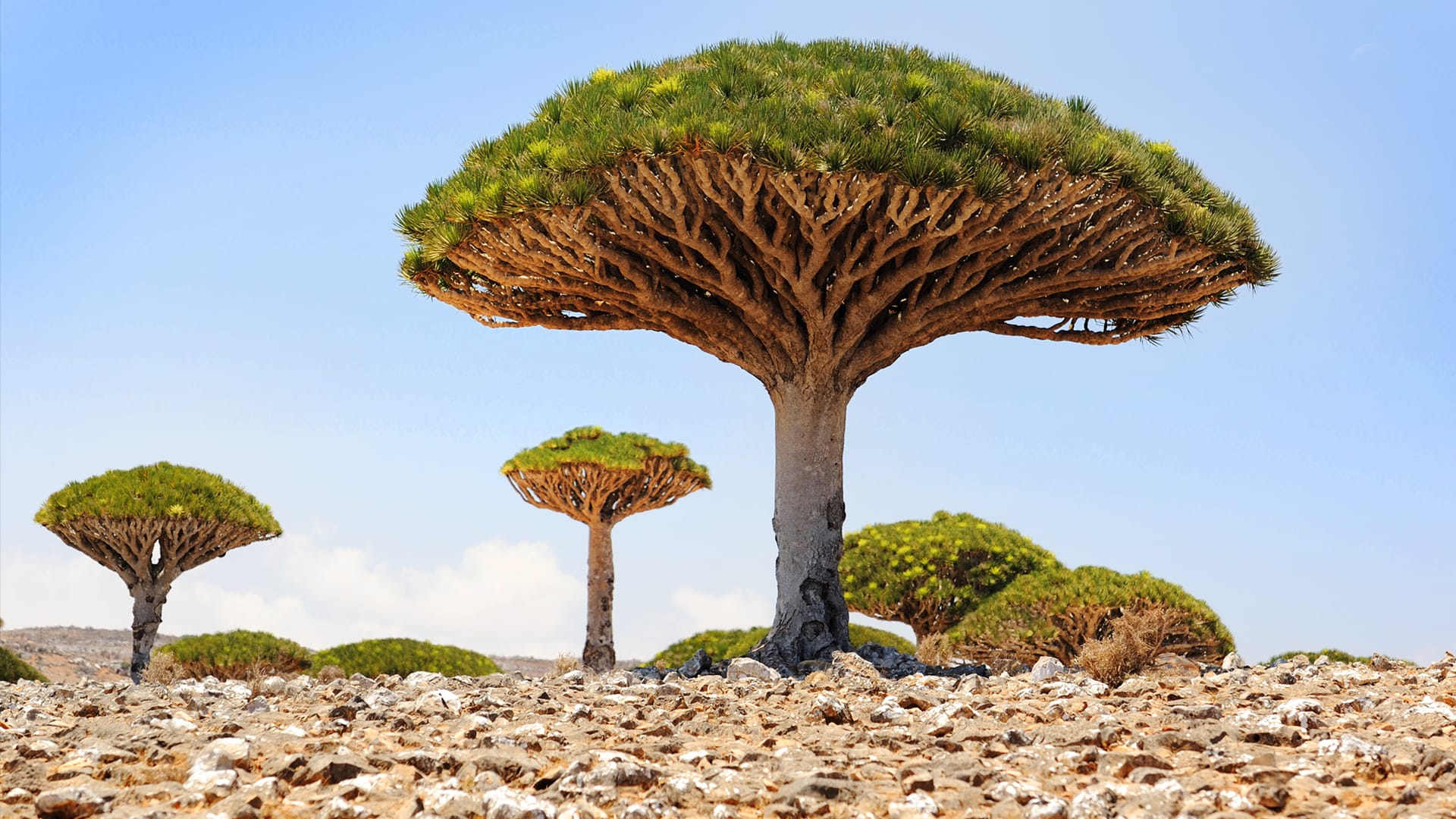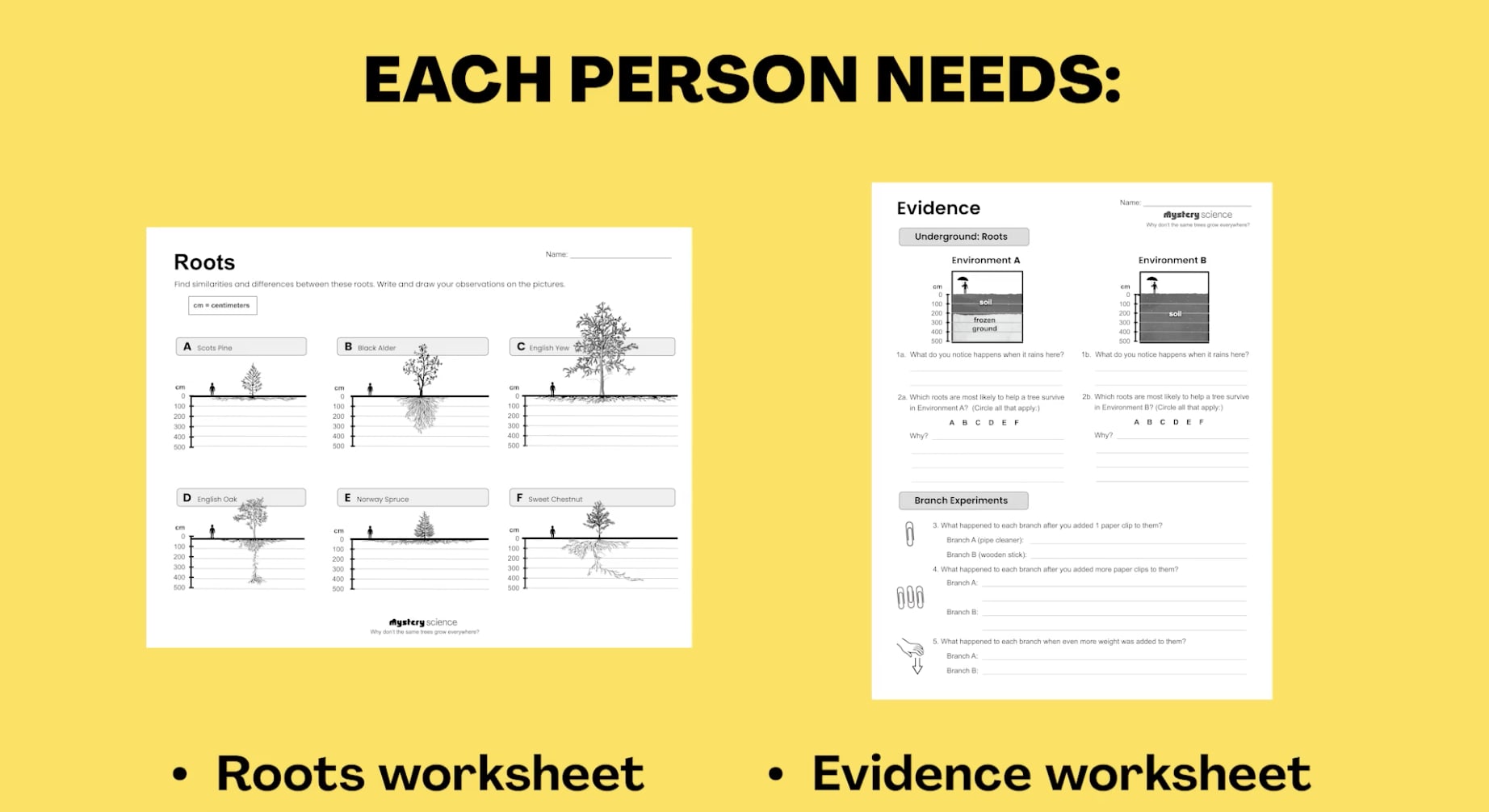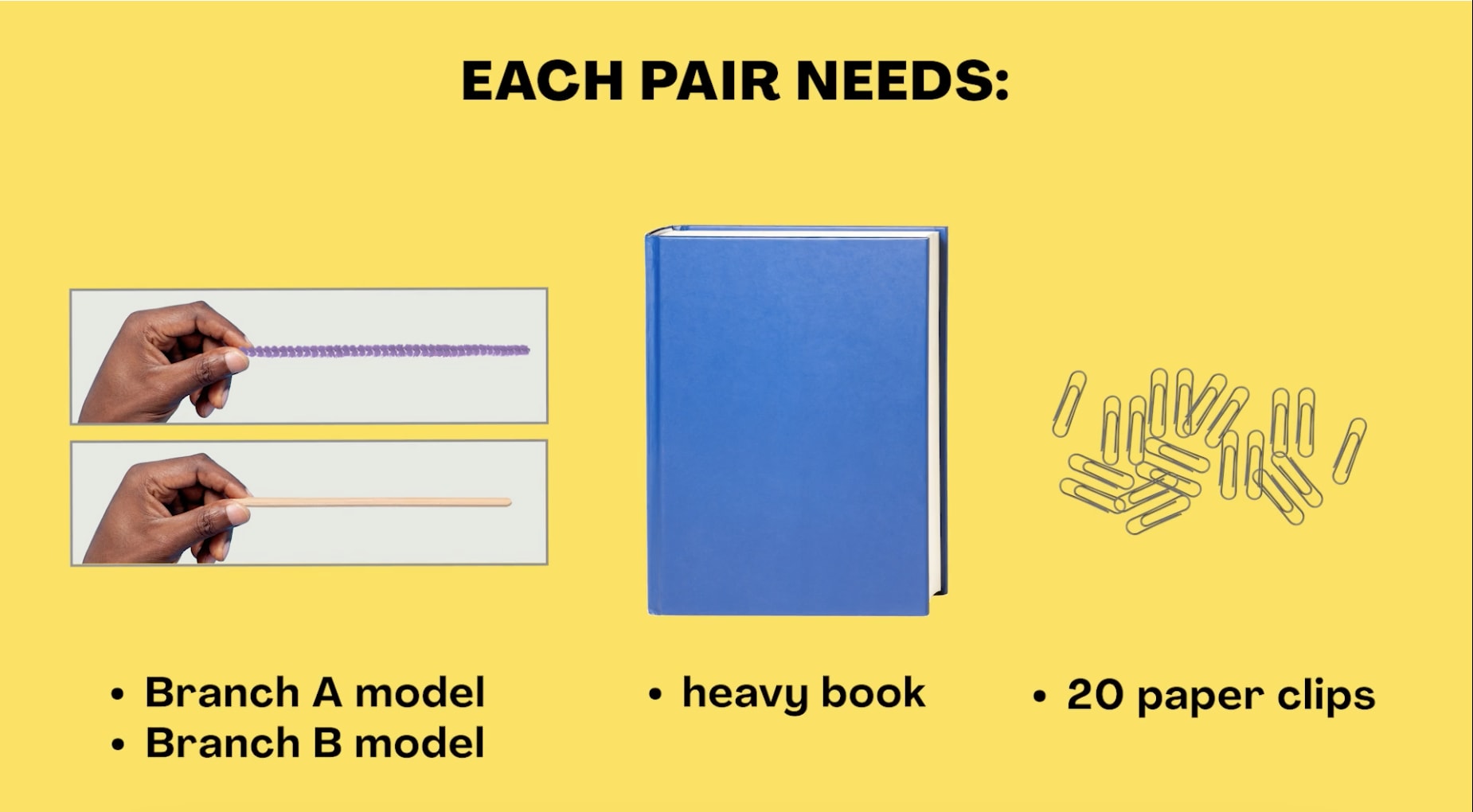Scroll for prep

Please wait…
This video is having trouble loading. You may have lost your Internet connection.
Step 1: Click to Reload this page
Step 2: Click to
Try our other video player
Step 3: Contact your teacher if trouble persists.
Or,
dismiss this message.
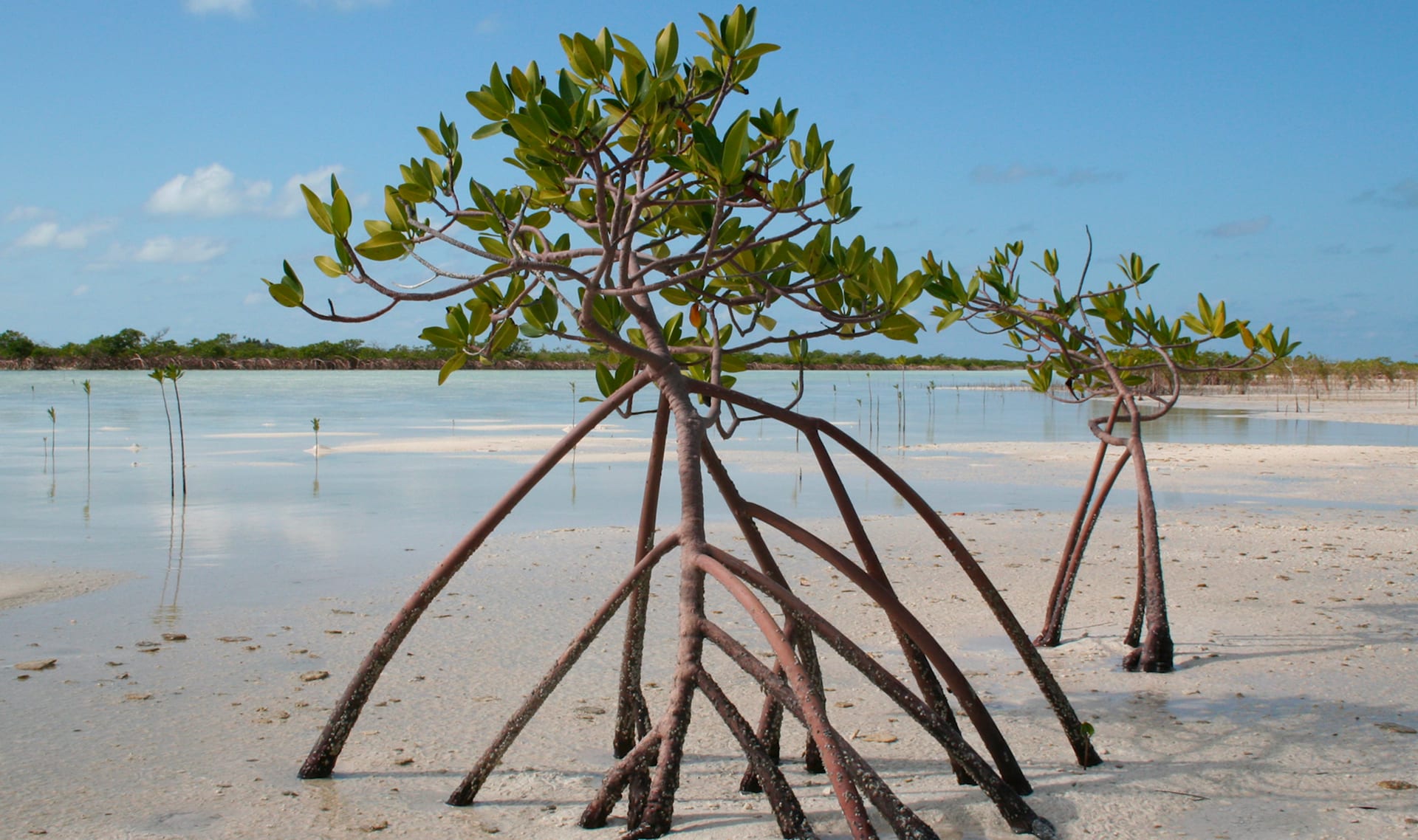
CONVERSEMOS:
¿Qué partes se parecen a las de otros árboles que has visto?
¿Qué partes son diferentes?
¿Qué partes se parecen a las de otros árboles que has visto?
¿Qué partes son diferentes?

Please wait…
This video is having trouble loading. You may have lost your Internet connection.
Step 1: Click to Reload this page
Step 2: Click to
Try our other video player
Step 3: Contact your teacher if trouble persists.
Or,
dismiss this message.
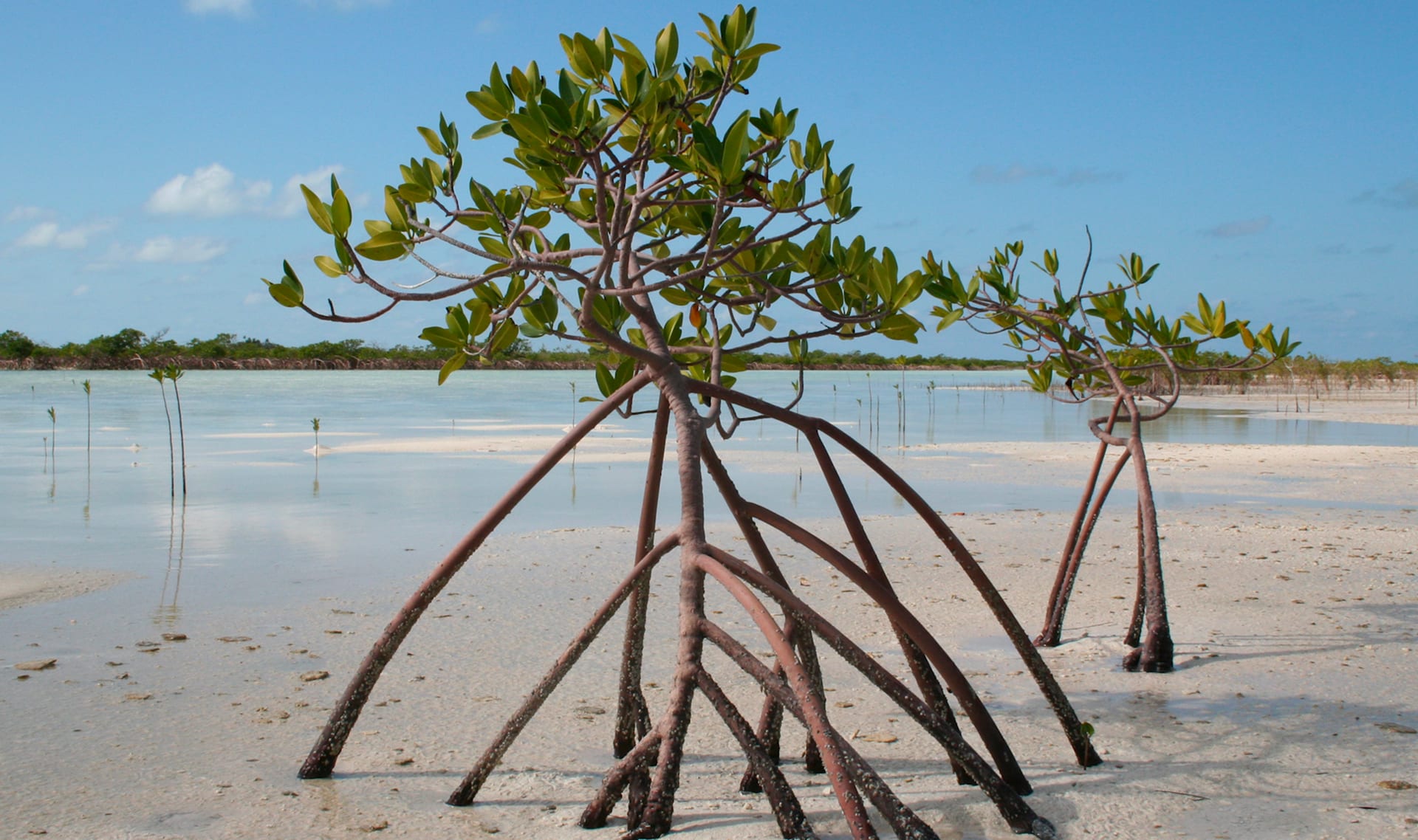
CONVERSEMOS:
Basándote en su estructura, ¿qué crees que estás partes curvas hacen para
ayudar a este árbol a sobrevivir?
Basándote en su estructura, ¿qué crees que estás partes curvas hacen para
ayudar a este árbol a sobrevivir?

Please wait…
This video is having trouble loading. You may have lost your Internet connection.
Step 1: Click to Reload this page
Step 2: Click to
Try our other video player
Step 3: Contact your teacher if trouble persists.
Or,
dismiss this message.

Please wait…
This video is having trouble loading. You may have lost your Internet connection.
Step 1: Click to Reload this page
Step 2: Click to
Try our other video player
Step 3: Contact your teacher if trouble persists.
Or,
dismiss this message.
Paso
01/21
01/21
En la actividad de hoy, vas a trabajar con un compañero o una
compañera.
compañera.

Please wait…
This video is having trouble loading. You may have lost your Internet connection.
Step 1: Click to Reload this page
Step 2: Click to
Try our other video player
Step 3: Contact your teacher if trouble persists.
Or,
dismiss this message.
Paso
02/21
02/21
Obtén estos materiales. (Recibirás otros más adelante.)

Please wait…
This video is having trouble loading. You may have lost your Internet connection.
Step 1: Click to Reload this page
Step 2: Click to
Try our other video player
Step 3: Contact your teacher if trouble persists.
Or,
dismiss this message.
Paso
03/21
03/21
Busca similitudes y diferencias entre las raíces de estos seis tipos de
árboles. Escribe (y dibuja) tus observaciones en tu hoja de Raíces.
árboles. Escribe (y dibuja) tus observaciones en tu hoja de Raíces.

Please wait…
This video is having trouble loading. You may have lost your Internet connection.
Step 1: Click to Reload this page
Step 2: Click to
Try our other video player
Step 3: Contact your teacher if trouble persists.
Or,
dismiss this message.
Paso
04/21
04/21
Conversemos.

Please wait…
This video is having trouble loading. You may have lost your Internet connection.
Step 1: Click to Reload this page
Step 2: Click to
Try our other video player
Step 3: Contact your teacher if trouble persists.
Or,
dismiss this message.
Paso
05/21
05/21
Pon atención y observa detenidamente lo cuando llueve en el
Ambiente A y en el Ambiente B. Contesta las preguntas 1a y 1b
en tu hoja de Evidencia.
Ambiente A y en el Ambiente B. Contesta las preguntas 1a y 1b
en tu hoja de Evidencia.

Please wait…
This video is having trouble loading. You may have lost your Internet connection.
Step 1: Click to Reload this page
Step 2: Click to
Try our other video player
Step 3: Contact your teacher if trouble persists.
Or,
dismiss this message.
Paso
06/21
06/21
Conversemos.

Please wait…
This video is having trouble loading. You may have lost your Internet connection.
Step 1: Click to Reload this page
Step 2: Click to
Try our other video player
Step 3: Contact your teacher if trouble persists.
Or,
dismiss this message.
Paso
07/21
07/21
Contesta las preguntas 2a y 2b en tu hoja de trabajo. Asegúrate
de usar la evidencia que obtuviste para respaldar tus afirmaciones.
de usar la evidencia que obtuviste para respaldar tus afirmaciones.

Please wait…
This video is having trouble loading. You may have lost your Internet connection.
Step 1: Click to Reload this page
Step 2: Click to
Try our other video player
Step 3: Contact your teacher if trouble persists.
Or,
dismiss this message.
Paso
08/21
08/21
Conversemos.

Please wait…
This video is having trouble loading. You may have lost your Internet connection.
Step 1: Click to Reload this page
Step 2: Click to
Try our other video player
Step 3: Contact your teacher if trouble persists.
Or,
dismiss this message.
Paso
09/21
09/21
Obtén estos materiales.

Please wait…
This video is having trouble loading. You may have lost your Internet connection.
Step 1: Click to Reload this page
Step 2: Click to
Try our other video player
Step 3: Contact your teacher if trouble persists.
Or,
dismiss this message.
Paso
10/21
10/21
Compañero 1: Sostén los modelos de las ramas sobre la orilla de tu
escritorio. Compañero 2: Pon un libro pesado sobre las dos ramas
en el escritorio. Ambas ramas deben de ser de la misma medida.
escritorio. Compañero 2: Pon un libro pesado sobre las dos ramas
en el escritorio. Ambas ramas deben de ser de la misma medida.

Please wait…
This video is having trouble loading. You may have lost your Internet connection.
Step 1: Click to Reload this page
Step 2: Click to
Try our other video player
Step 3: Contact your teacher if trouble persists.
Or,
dismiss this message.
Paso
11/21
11/21
Pon un clip en la punta de cada rama. Conversemos.
Luego, contesta la pregunta #3 en tu hoja de Evidencia.
Luego, contesta la pregunta #3 en tu hoja de Evidencia.

Please wait…
This video is having trouble loading. You may have lost your Internet connection.
Step 1: Click to Reload this page
Step 2: Click to
Try our other video player
Step 3: Contact your teacher if trouble persists.
Or,
dismiss this message.
Paso
12/21
12/21
Explora lo que sucede cuando pones más clips en las puntas de
los modelos de las ramas. Platica sobre tus observaciones con tu
compañero o compañera.
los modelos de las ramas. Platica sobre tus observaciones con tu
compañero o compañera.

Please wait…
This video is having trouble loading. You may have lost your Internet connection.
Step 1: Click to Reload this page
Step 2: Click to
Try our other video player
Step 3: Contact your teacher if trouble persists.
Or,
dismiss this message.
Paso
13/21
13/21
Contesta la pregunta #4 en tu hoja de Evidencia.

Please wait…
This video is having trouble loading. You may have lost your Internet connection.
Step 1: Click to Reload this page
Step 2: Click to
Try our other video player
Step 3: Contact your teacher if trouble persists.
Or,
dismiss this message.
Paso
14/21
14/21
Observa lo que sucedió cuando le pusimos mucho peso a nuestras
ramas. Platica con tu compañero o compañera. Luego, contesta la
pregunta #5 en tu hoja de Evidencia.
ramas. Platica con tu compañero o compañera. Luego, contesta la
pregunta #5 en tu hoja de Evidencia.

Please wait…
This video is having trouble loading. You may have lost your Internet connection.
Step 1: Click to Reload this page
Step 2: Click to
Try our other video player
Step 3: Contact your teacher if trouble persists.
Or,
dismiss this message.
Paso
15/21
15/21
Conversemos.

Please wait…
This video is having trouble loading. You may have lost your Internet connection.
Step 1: Click to Reload this page
Step 2: Click to
Try our other video player
Step 3: Contact your teacher if trouble persists.
Or,
dismiss this message.
Paso
16/21
16/21
Veamos lo que le sucede a estos dos tipos de ramas de verdad tienen
que soportar peso. Luego, conversemos:
que soportar peso. Luego, conversemos:

Please wait…
This video is having trouble loading. You may have lost your Internet connection.
Step 1: Click to Reload this page
Step 2: Click to
Try our other video player
Step 3: Contact your teacher if trouble persists.
Or,
dismiss this message.
Paso
17/21
17/21
Obtén estos últimos materiales.

Please wait…
This video is having trouble loading. You may have lost your Internet connection.
Step 1: Click to Reload this page
Step 2: Click to
Try our other video player
Step 3: Contact your teacher if trouble persists.
Or,
dismiss this message.
Paso
18/21
18/21
Lee la hoja de información sobre el bosque Anchortown. Usa tu lápiz
rojo para subrayar la información sobre qué tipo de raíces
ayudan a los árboles a sobrevivir en este bosque.
rojo para subrayar la información sobre qué tipo de raíces
ayudan a los árboles a sobrevivir en este bosque.

Please wait…
This video is having trouble loading. You may have lost your Internet connection.
Step 1: Click to Reload this page
Step 2: Click to
Try our other video player
Step 3: Contact your teacher if trouble persists.
Or,
dismiss this message.
Paso
19/21
19/21
Fíjate en las pistas en tu hoja de Evidencia y en la hoja de información
sobre el bosque Anchortown. Platica con tu compañero/a. Luego,
contesta la pregunta #1 en la hoja de “Resuelve el Rompecabezas.”
sobre el bosque Anchortown. Platica con tu compañero/a. Luego,
contesta la pregunta #1 en la hoja de “Resuelve el Rompecabezas.”

Please wait…
This video is having trouble loading. You may have lost your Internet connection.
Step 1: Click to Reload this page
Step 2: Click to
Try our other video player
Step 3: Contact your teacher if trouble persists.
Or,
dismiss this message.
Paso
20/21
20/21
Lee la hoja de información sobre Anchortown otra vez. Usa tu lápiz
azul para subrayar la información sobre qué tipo de ramas
ayudan a un árbol a sobrevivir en el bosque Anchortown.
azul para subrayar la información sobre qué tipo de ramas
ayudan a un árbol a sobrevivir en el bosque Anchortown.

Please wait…
This video is having trouble loading. You may have lost your Internet connection.
Step 1: Click to Reload this page
Step 2: Click to
Try our other video player
Step 3: Contact your teacher if trouble persists.
Or,
dismiss this message.
Paso
21/21
21/21
Fíjate en las pistas en tu hoja de Evidencia y en la hoja de información
sobre el bosque Anchortown. Platica con tu compañero/a. Luego,
contesta la pregunta #2 y dibuja las raíces.
sobre el bosque Anchortown. Platica con tu compañero/a. Luego,
contesta la pregunta #2 y dibuja las raíces.

Please wait…
This video is having trouble loading. You may have lost your Internet connection.
Step 1: Click to Reload this page
Step 2: Click to
Try our other video player
Step 3: Contact your teacher if trouble persists.
Or,
dismiss this message.
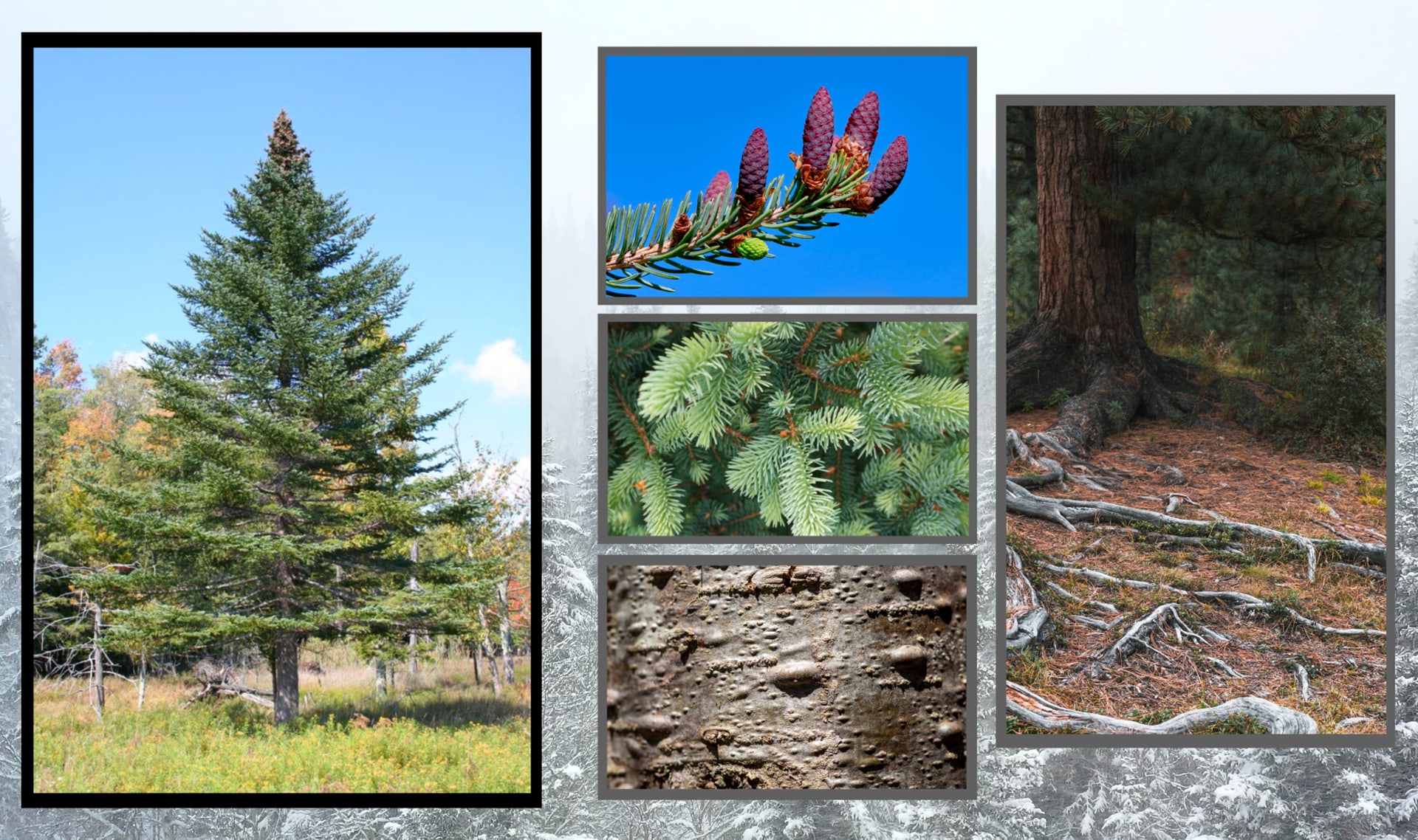
CONVERSEMOS:
¿Qué otras cosas notas sobre este árbol?
¿Cómo describirías sus estructuras?
¿Qué otras cosas notas sobre este árbol?
¿Cómo describirías sus estructuras?

Please wait…
This video is having trouble loading. You may have lost your Internet connection.
Step 1: Click to Reload this page
Step 2: Click to
Try our other video player
Step 3: Contact your teacher if trouble persists.
Or,
dismiss this message.
CONVERSEMOS:
¿Qué partes de tu cuerpo trabajan juntas como partes de un sistema?
¿Cómo te ayuda ese sistema a sobrevivir?

Please wait…
This video is having trouble loading. You may have lost your Internet connection.
Step 1: Click to Reload this page
Step 2: Click to
Try our other video player
Step 3: Contact your teacher if trouble persists.
Or,
dismiss this message.
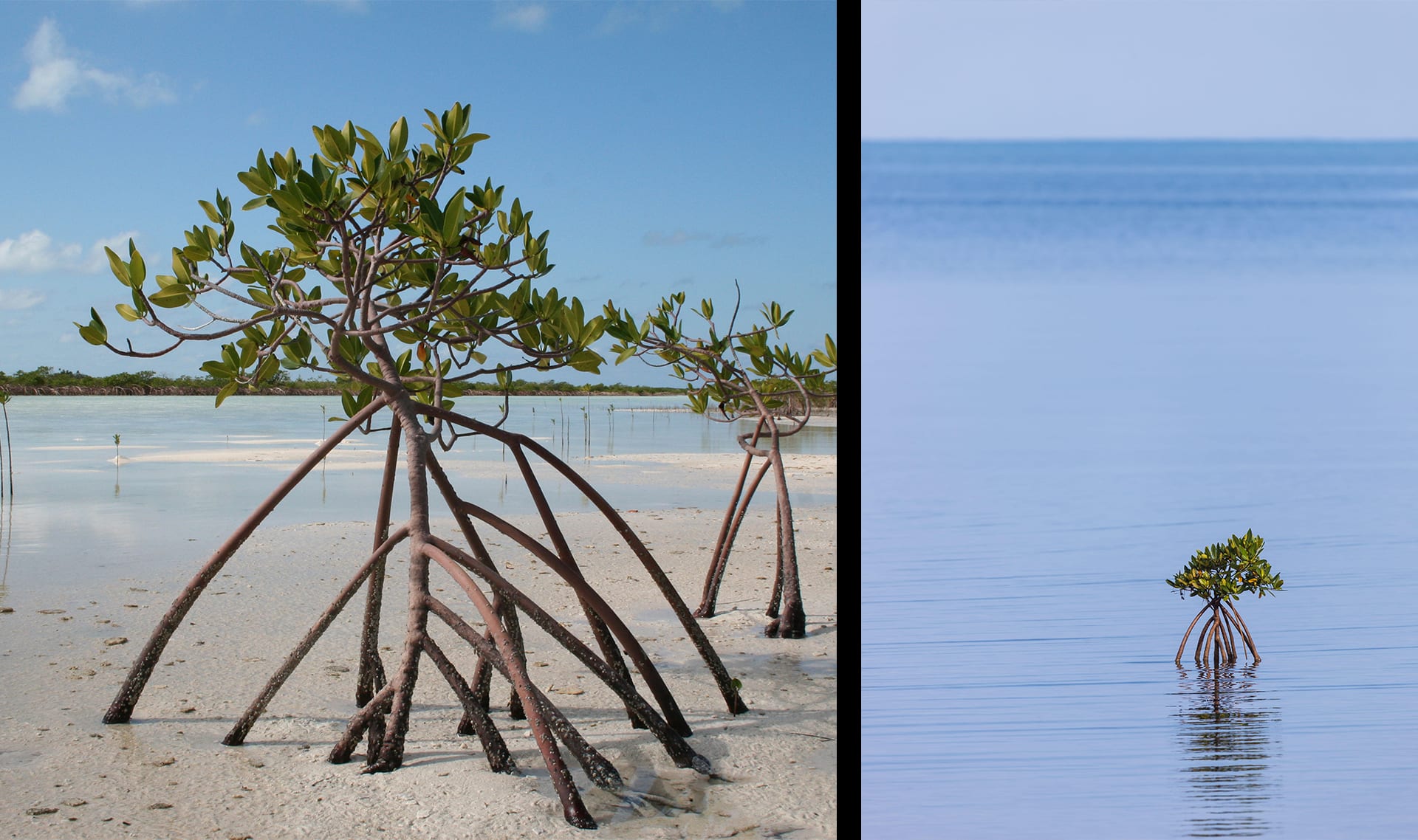
CONVERSEMOS:
Básandote en la evidencia, ¿cómo podrían las estructuras de este árbol
ayudarlo a mantenerse seguro en un entorno lleno de agua?
Básandote en la evidencia, ¿cómo podrían las estructuras de este árbol
ayudarlo a mantenerse seguro en un entorno lleno de agua?

Please wait…
This video is having trouble loading. You may have lost your Internet connection.
Step 1: Click to Reload this page
Step 2: Click to
Try our other video player
Step 3: Contact your teacher if trouble persists.
Or,
dismiss this message.
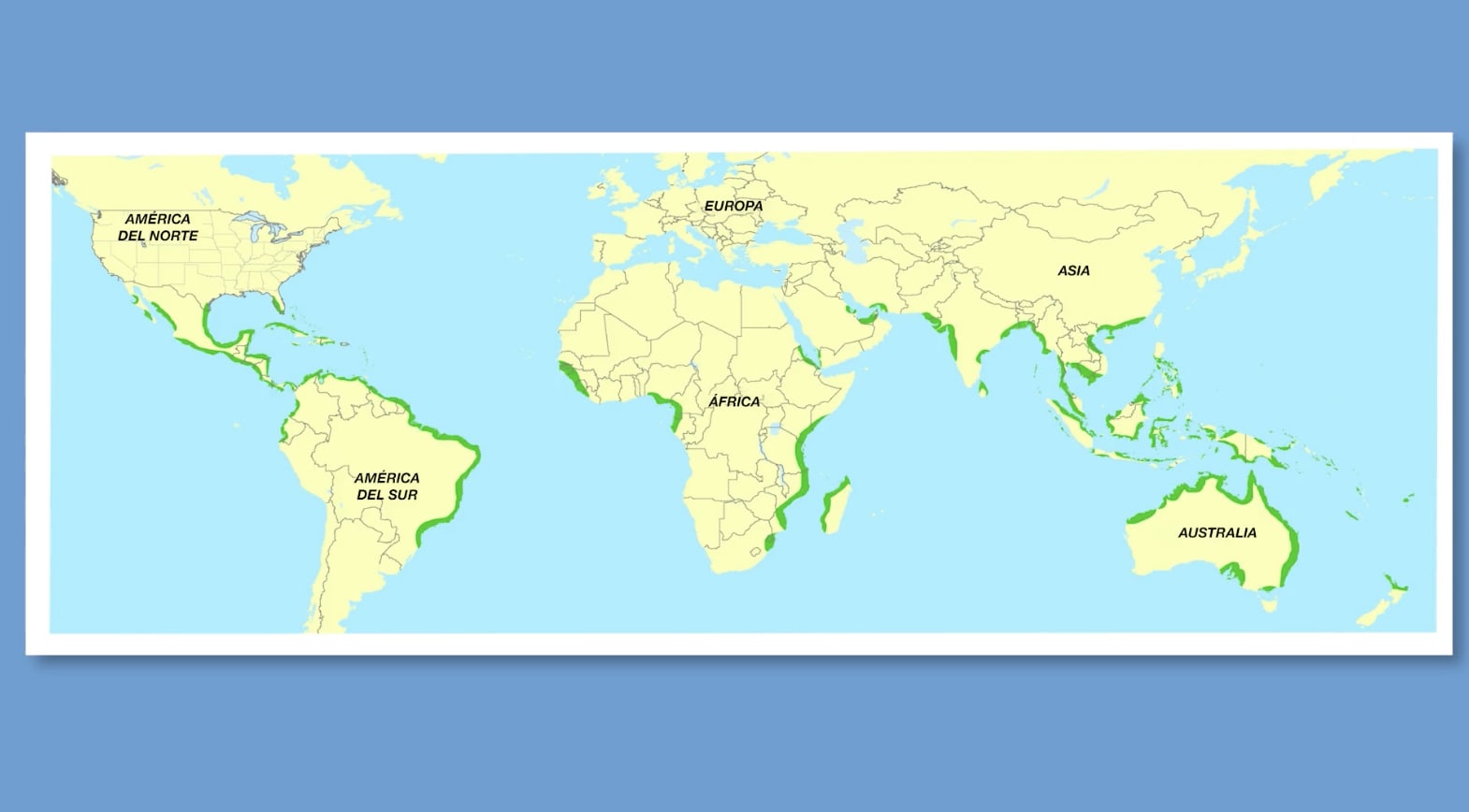
CONVERSEMOS:
¿Qué patrón notas sobre los lugares en el qué se encuentran estos tipos
de árboles?
¿Qué patrón notas sobre los lugares en el qué se encuentran estos tipos
de árboles?

Please wait…
This video is having trouble loading. You may have lost your Internet connection.
Step 1: Click to Reload this page
Step 2: Click to
Try our other video player
Step 3: Contact your teacher if trouble persists.
Or,
dismiss this message.

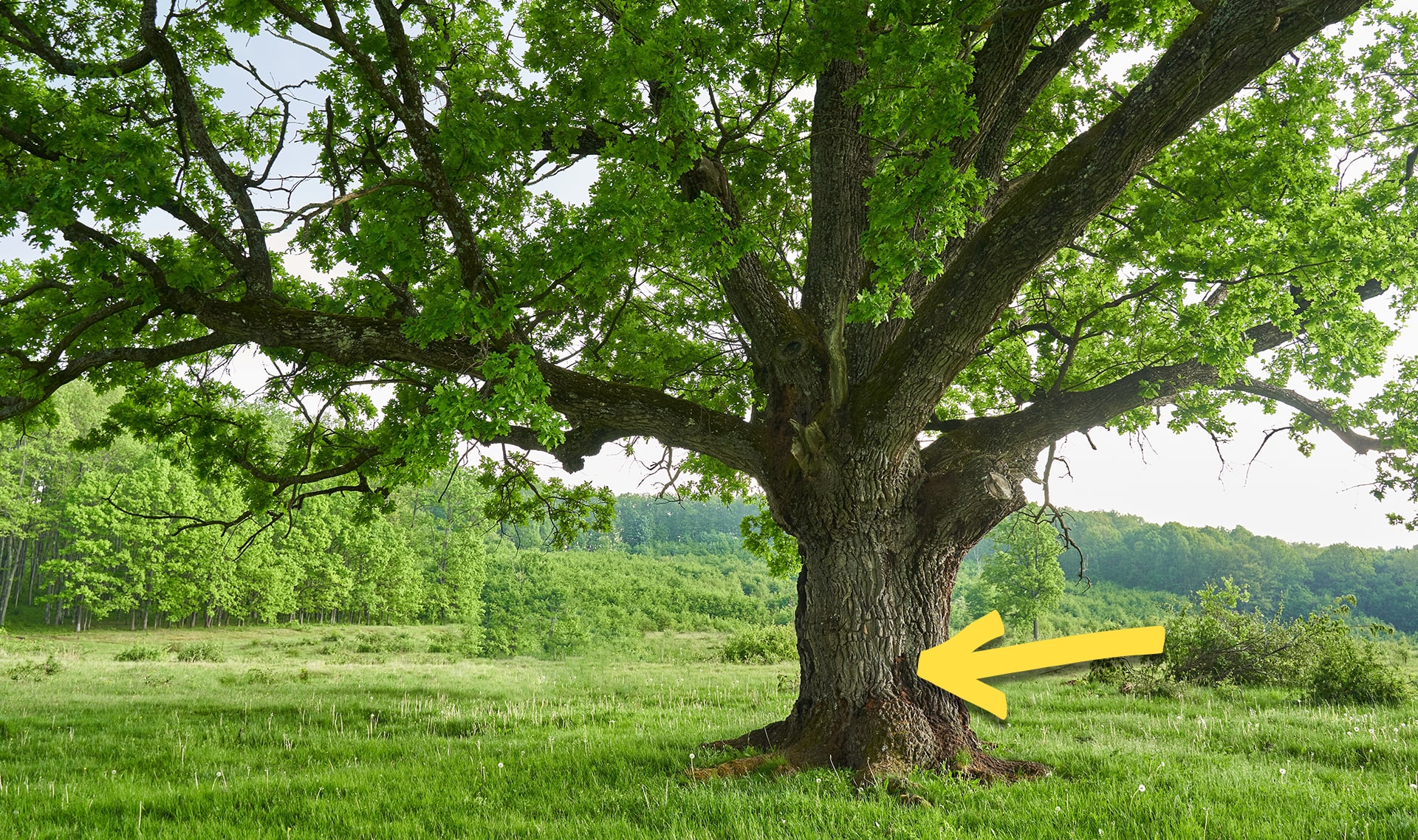
tronco
1 de 14
la base gruesa de un árbol
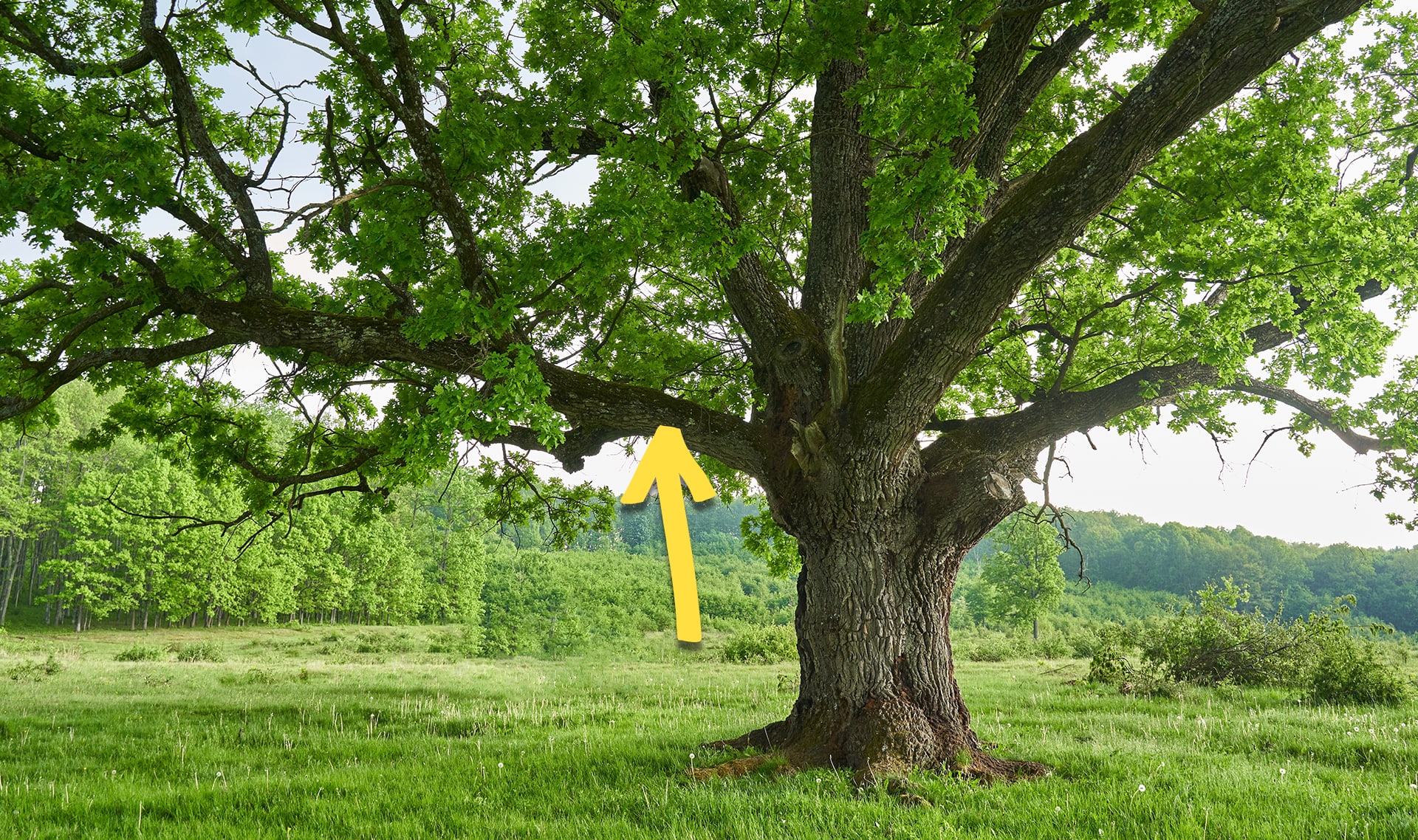
rama
2 de 14
la parte de un árbol que crece del tronco y suele tener hojas
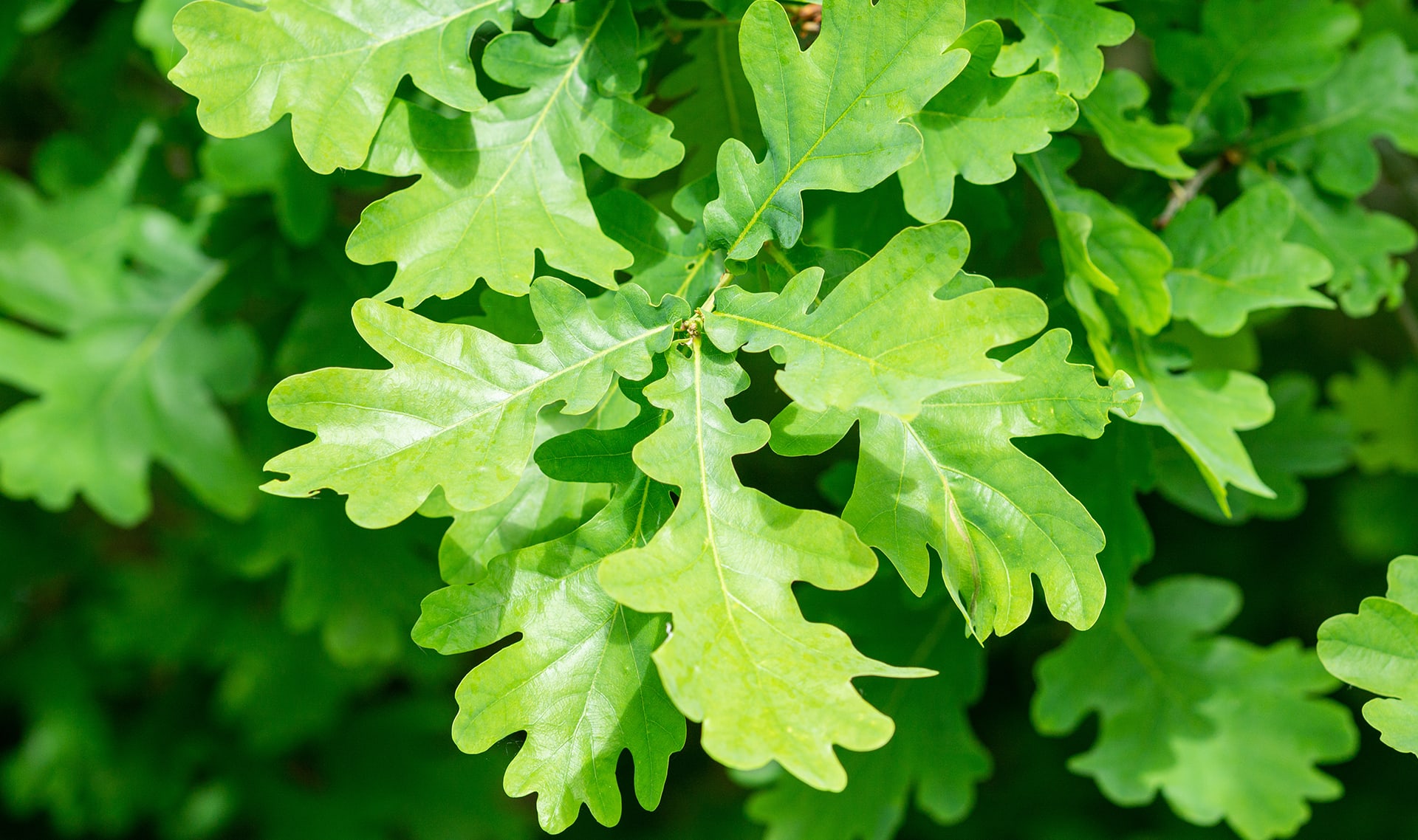
hoja
3 de 14
la parte de una planta que por lo regular es plana y verde
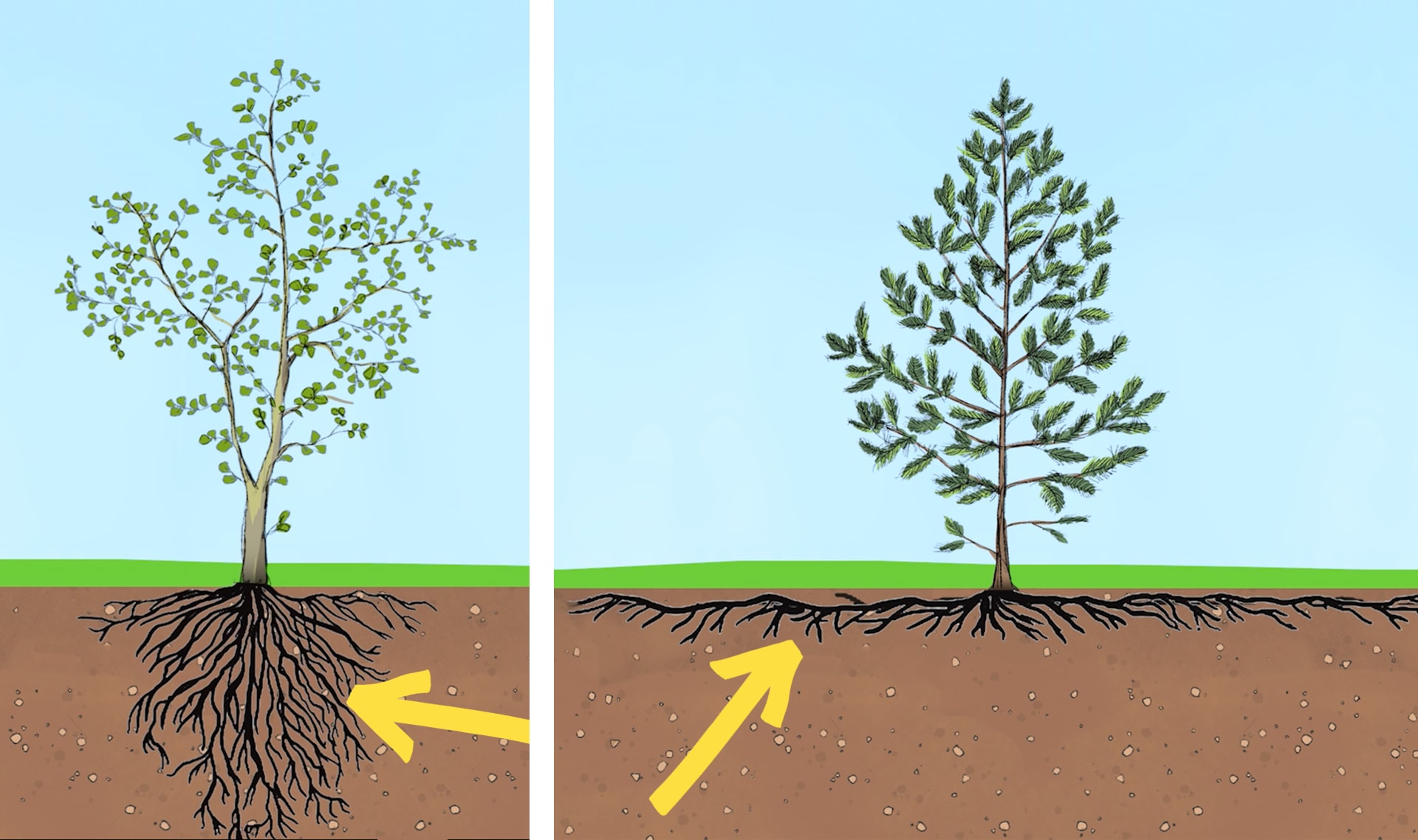
raíz
4 de 14
la parte de una planta que usualmente se encuentra bajo tierra
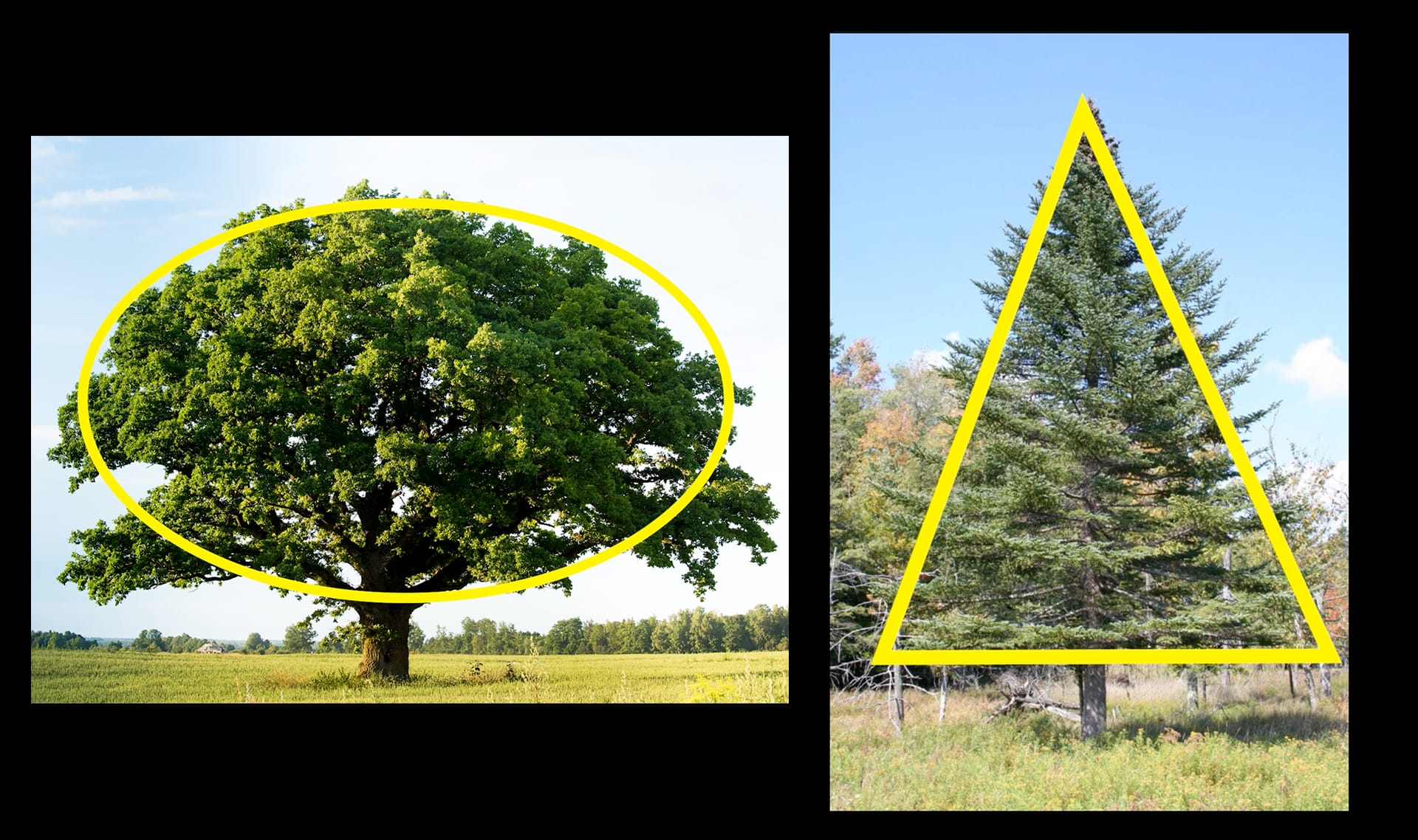
estructura
5 de 14
la forma específica que tiene una cosa

Please wait…
This video is having trouble loading. You may have lost your Internet connection.
Step 1: Click to Reload this page
Step 2: Click to
Try our other video player
Step 3: Contact your teacher if trouble persists.
Or,
dismiss this message.
función
6 de 14
lo que algo hace
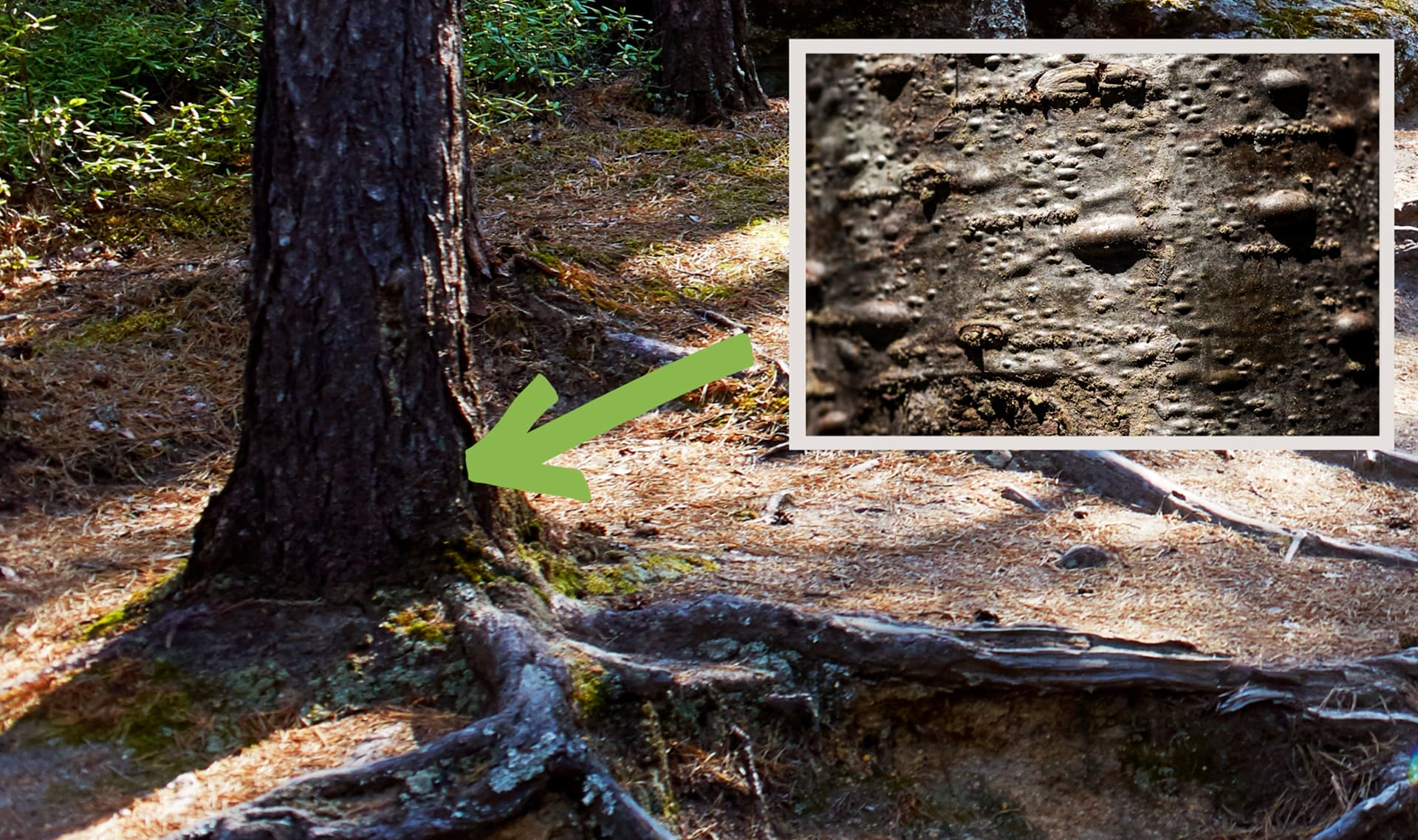
externo/a
7 de 14
algo que se encuentra afuera de una cosa, por ejemplo, en la superficie del cuerpo de seres vivos
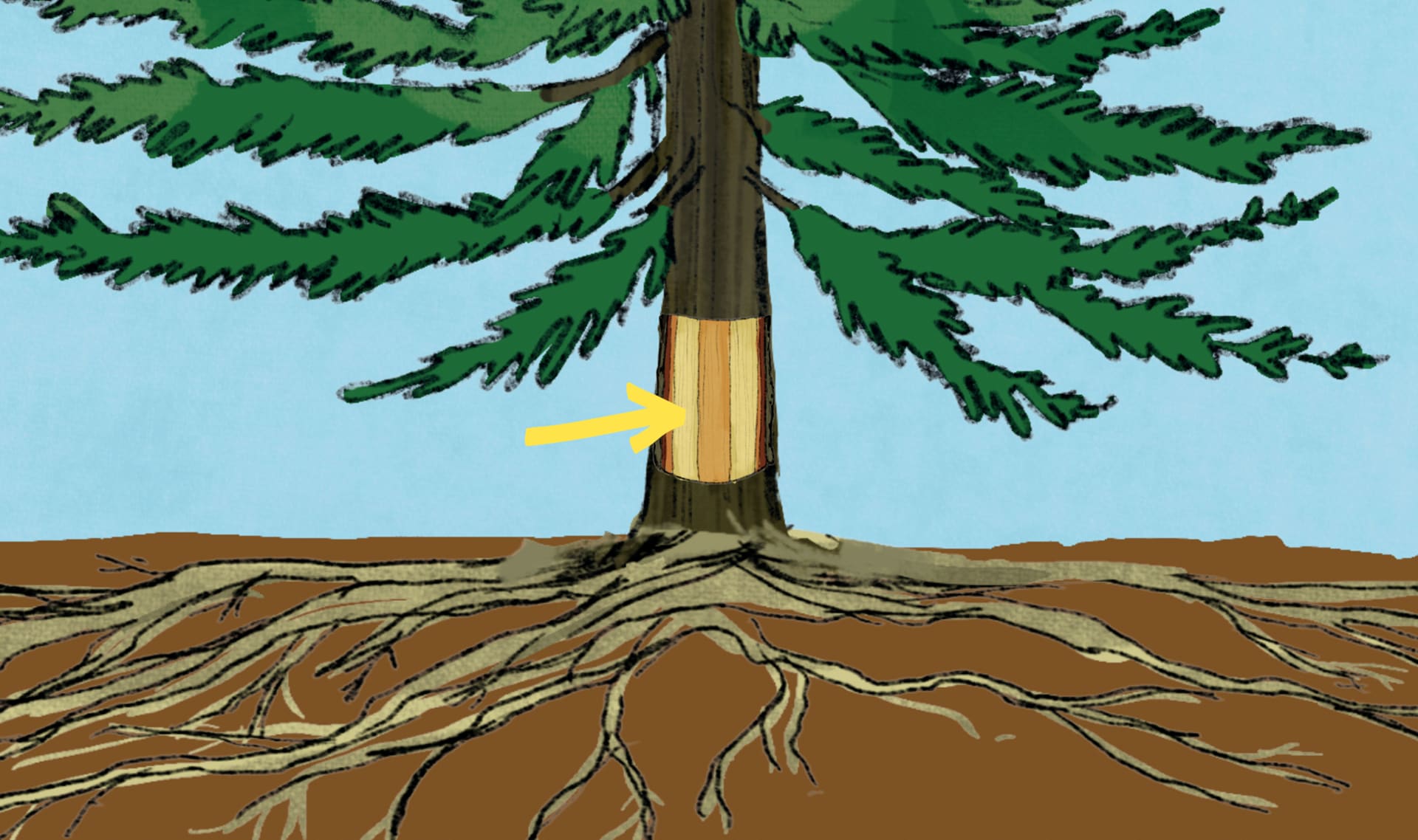
interno/a
8 de 14
algo que se encuentra dentro de una cosa, por ejemplo, dentro del cuerpo de seres vivos
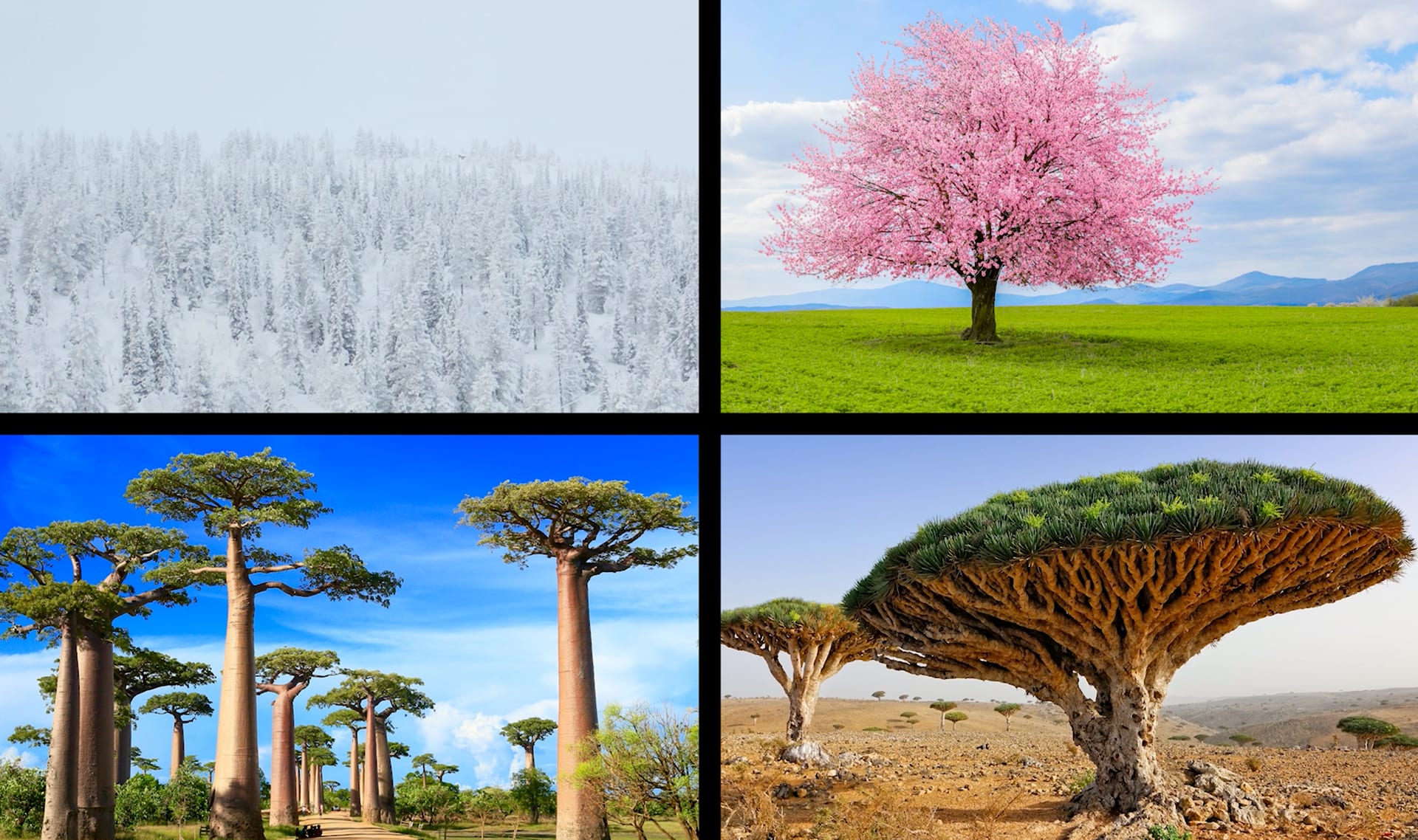
medio ambiente
9 de 14
todos los seres vivos y no vivientes que se encuentran en un lugar

taiga (bosque boreal)
10 de 14
un bosque frío donde los árboles suelen tener hojas que parecen agujas
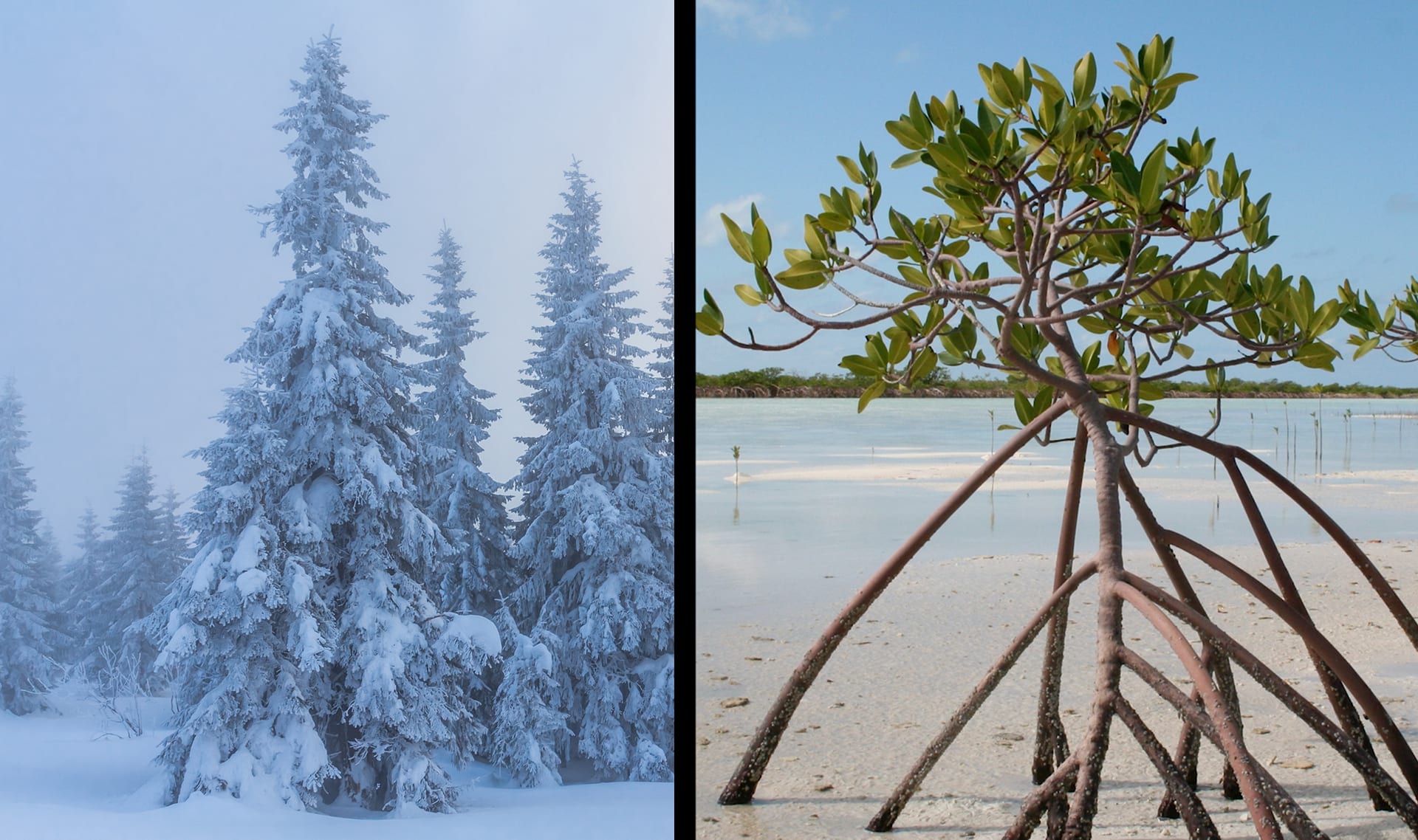
adaptación
11 de 14
un rasgo físico o un comportamiento que ayuda a un ser vivo a sobrevivir en un ambiente particular

sistema
12 de 14
un conjunto de cosas que se afectan entre sí y funcionan juntas
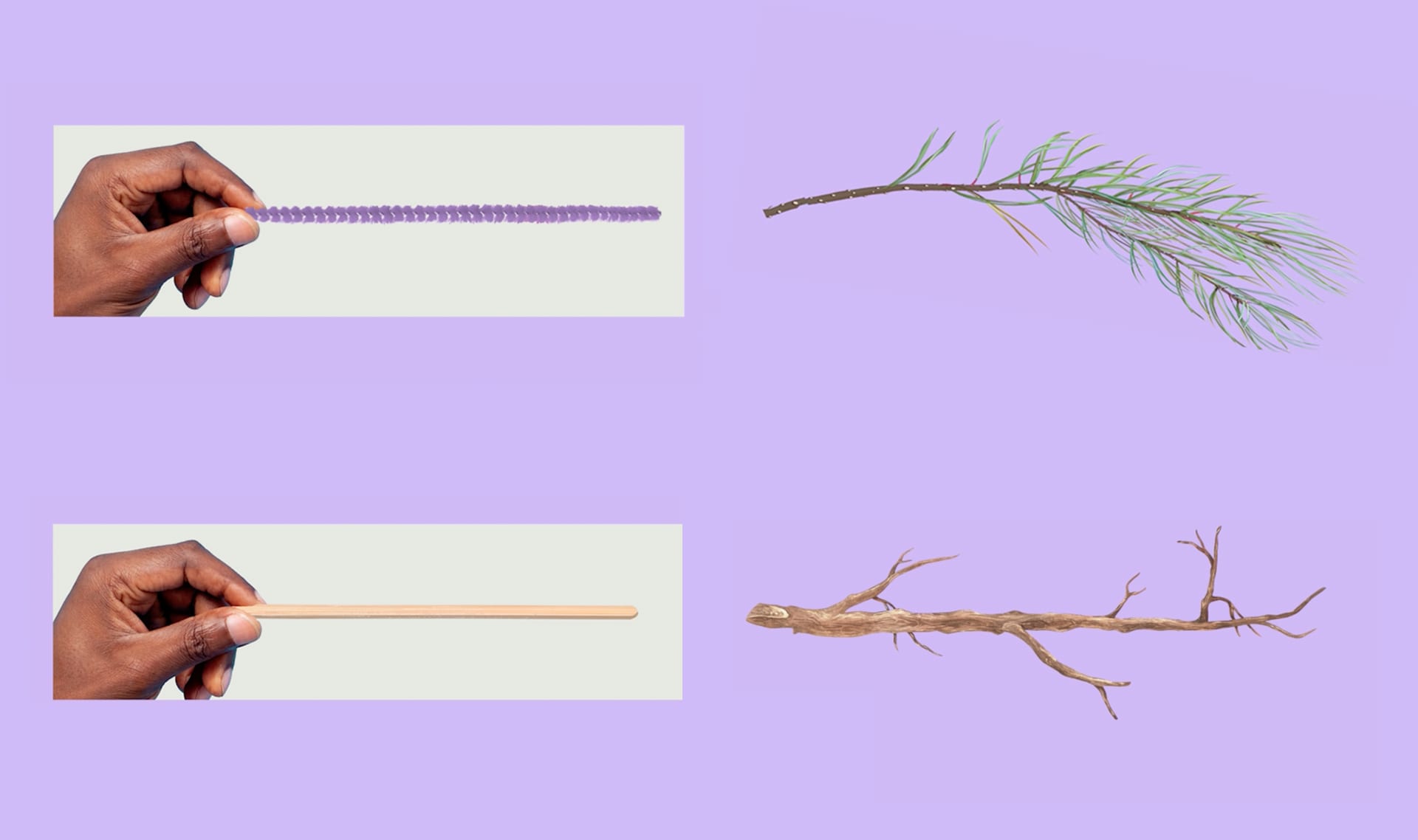
modelo
13 de 14
una versión de mentiras de algo que los científicos usan cuando la cosa de verdad es algo demasiado grande, pequeño, o complicado para poder usarlo en sus estudios

Please wait…
This video is having trouble loading. You may have lost your Internet connection.
Step 1: Click to Reload this page
Step 2: Click to
Try our other video player
Step 3: Contact your teacher if trouble persists.
Or,
dismiss this message.
evidencia
14 de 14
información que puede ser usada para respaldar o rechazar una idea
